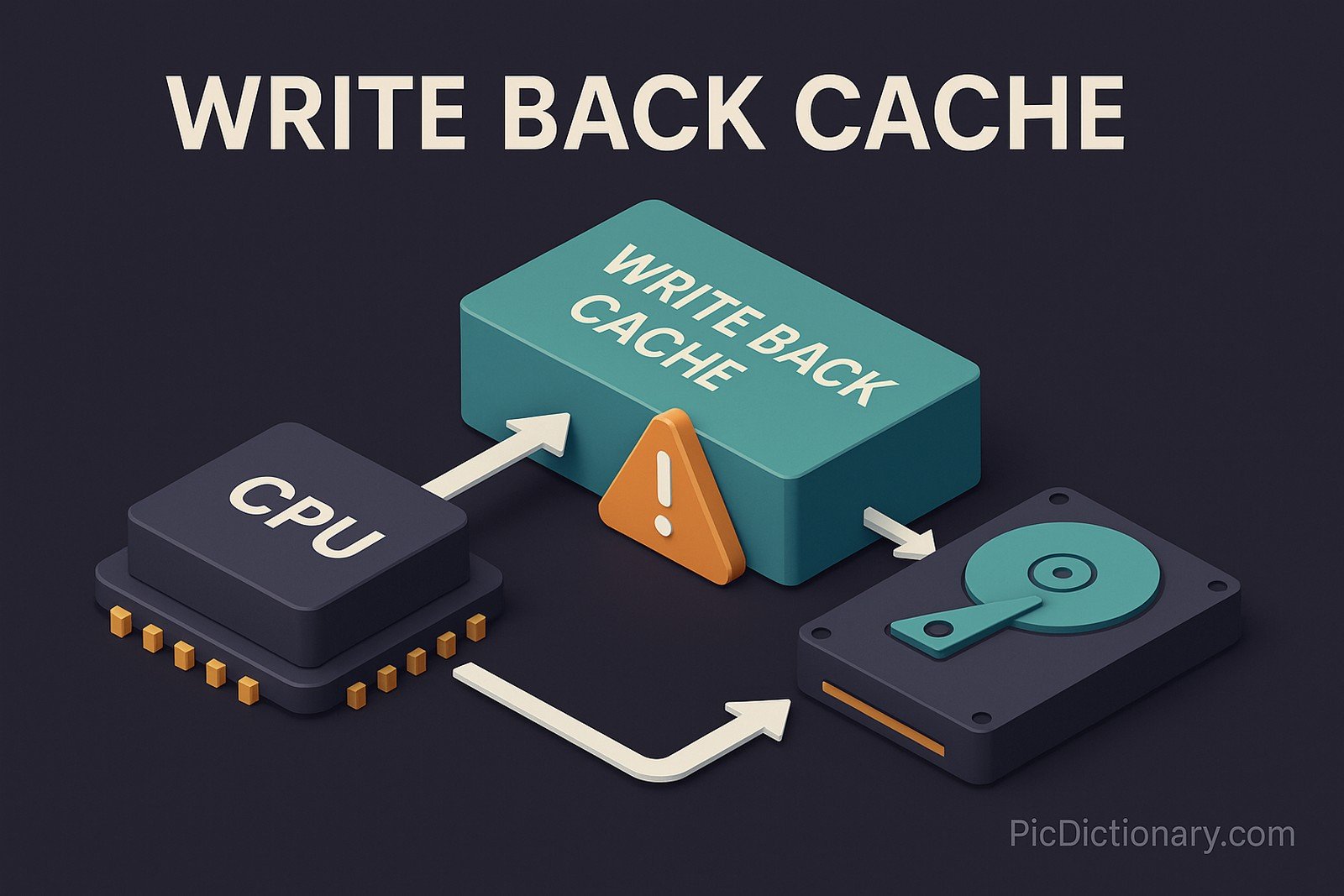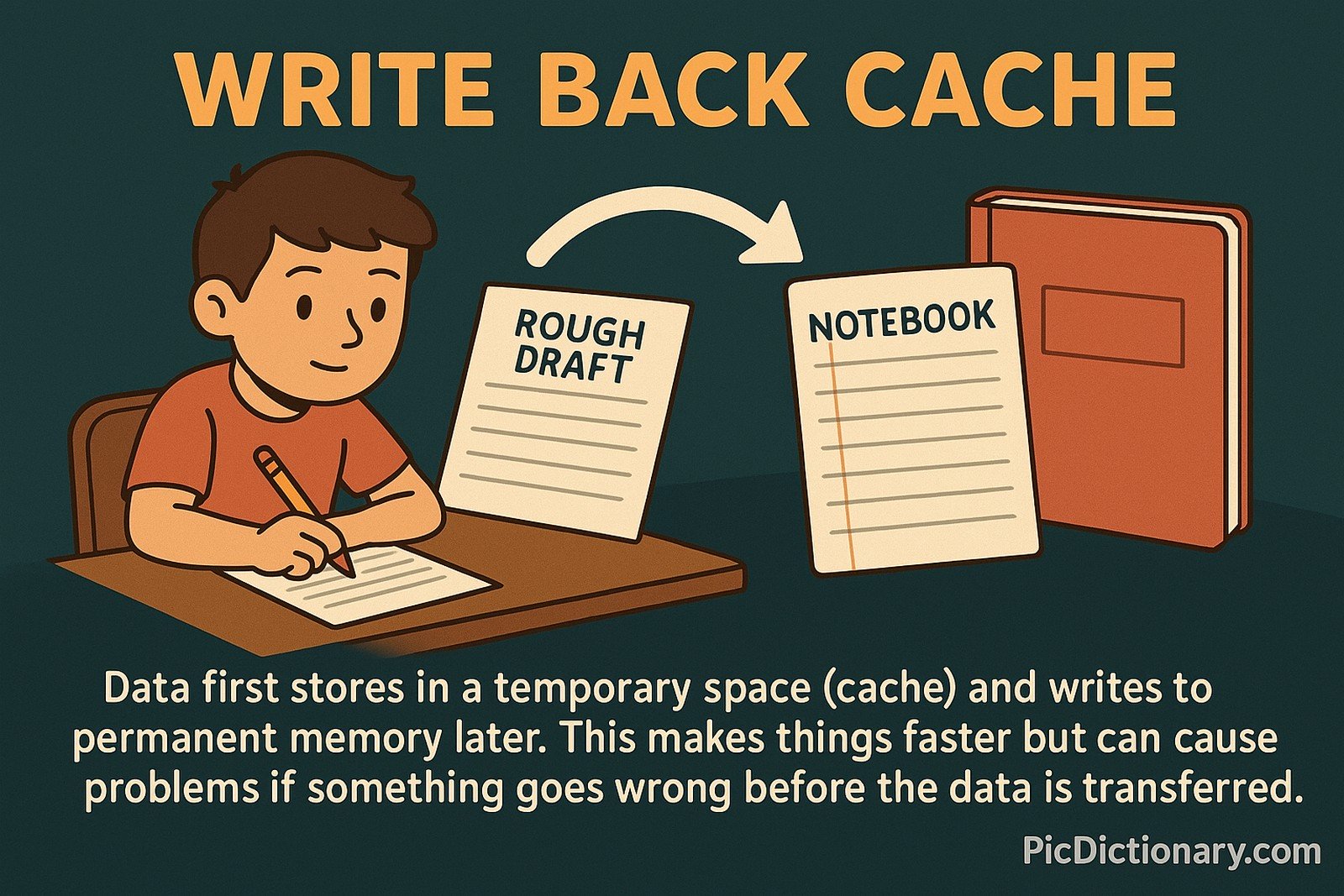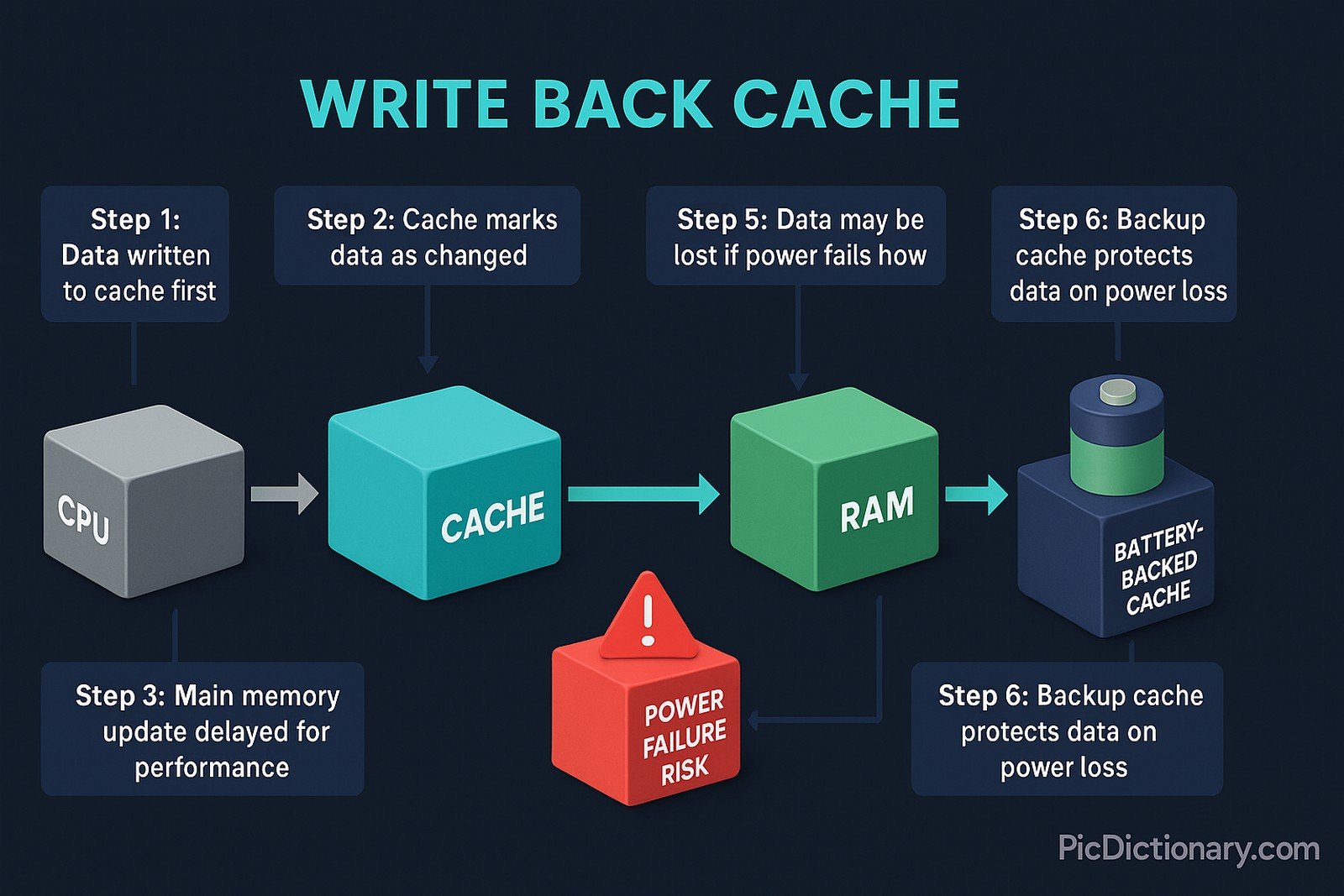Write Back Cache

Quick Navigation:
- Write Back Cache Definition
- Write Back Cache Explained Easy
- Write Back Cache Origin
- Write Back Cache Etymology
- Write Back Cache Usage Trends
- Write Back Cache Usage
- Write Back Cache Examples in Context
- Write Back Cache FAQ
- Write Back Cache Related Words
Write Back Cache Definition
A Write Back Cache is a caching mechanism where data is first written to the cache, and the update to main memory happens later. This method improves system performance by reducing memory write cycles. Data modifications occur in the cache, and only when necessary, they are written to RAM. However, this approach risks data loss in case of power failure before the cache writes to the main memory. To mitigate this, systems often use battery-backed caches or non-volatile memory.
Write Back Cache Explained Easy
Imagine you’re doing homework, and instead of writing answers directly in your notebook, you first jot them down in a rough draft. When you're sure everything is correct, you copy it neatly into your notebook. A Write Back Cache works the same way: it first stores data in a temporary space (cache) and writes it to permanent memory later. This makes things faster but can cause problems if something goes wrong before the data is transferred.
Write Back Cache Origin
The concept of write-back caching emerged with the evolution of computer architecture to improve memory access speed. Early computing systems faced slow memory writes, which led to the development of caching strategies in the 1980s. As CPUs became faster, efficient caching mechanisms became essential to prevent performance bottlenecks.
Write Back Cache Etymology
The term "write-back" comes from the process where modified data in the cache is "written back" to the main memory only when necessary, rather than immediately.
Write Back Cache Usage Trends
Write-back caching has seen increasing adoption with advancements in CPU and memory hierarchies. Modern processors, storage controllers, and SSDs use this technique to enhance performance. However, its use requires careful management to avoid data inconsistency issues, making it common in systems with backup mechanisms like battery-backed RAID controllers and NVMe storage devices.
Write Back Cache Usage
- Formal/Technical Tagging:
- Computer Architecture
- Memory Management
- Caching Mechanisms - Typical Collocations:
- "write-back caching strategy"
- "delayed memory write"
- "cache-coherence mechanism"
- "write-back policy in storage controllers"
Write Back Cache Examples in Context
- A write-back cache in modern SSDs ensures fast read/write speeds by delaying memory writes.
- High-performance gaming consoles use write-back caching to manage real-time graphics rendering.
- RAID storage controllers use write-back cache with a battery backup to prevent data loss.
Write Back Cache FAQ
- What is Write Back Cache?
Write Back Cache is a memory caching method where data is first written to the cache and later updated to the main memory. - How does Write Back Cache improve performance?
It reduces memory write cycles by allowing the processor to continue operations without waiting for memory writes. - What is the risk of using Write Back Cache?
There is a risk of data loss if the system crashes before cached data is written to memory. - How is Write Back Cache different from Write Through Cache?
Write Through Cache writes data to both cache and memory simultaneously, while Write Back Cache delays writing to memory. - Where is Write Back Cache commonly used?
It is used in CPUs, SSDs, RAID controllers, and high-performance computing systems. - Can Write Back Cache be disabled?
Yes, but doing so may decrease system performance significantly. - How does Write Back Cache handle power failures?
Systems often use battery-backed caches or non-volatile memory to prevent data loss. - Does Write Back Cache affect data integrity?
It can, but cache-coherence mechanisms ensure consistency in multi-core and multi-threaded environments. - Why do some SSDs use Write Back Cache?
It enhances write performance by reducing the number of direct memory accesses. - What happens if Write Back Cache gets full?
Cached data is flushed to memory based on a predefined eviction policy, ensuring continuous operations.

Write Back Cache Related Words
- Categories/Topics:
- CPU Caching
- Data Storage
- Memory Hierarchies
Did you know?
In early computing, the lack of Write Back Cache meant CPUs had to wait for slow memory writes, significantly slowing down processing. The introduction of caching in processors like the Intel 80486 revolutionized performance, allowing faster computing and paving the way for modern multi-level cache architectures.
PicDictionary.com is an online dictionary in pictures. If you have questions or suggestions, please reach out to us on WhatsApp or Twitter.Authors | Arjun Vishnu | @ArjunAndVishnu

I am Vishnu. I like AI, Linux, Single Board Computers, and Cloud Computing. I create the web & video content, and I also write for popular websites.
My younger brother, Arjun handles image & video editing. Together, we run a YouTube Channel that's focused on reviewing gadgets and explaining technology.



Comments powered by CComment